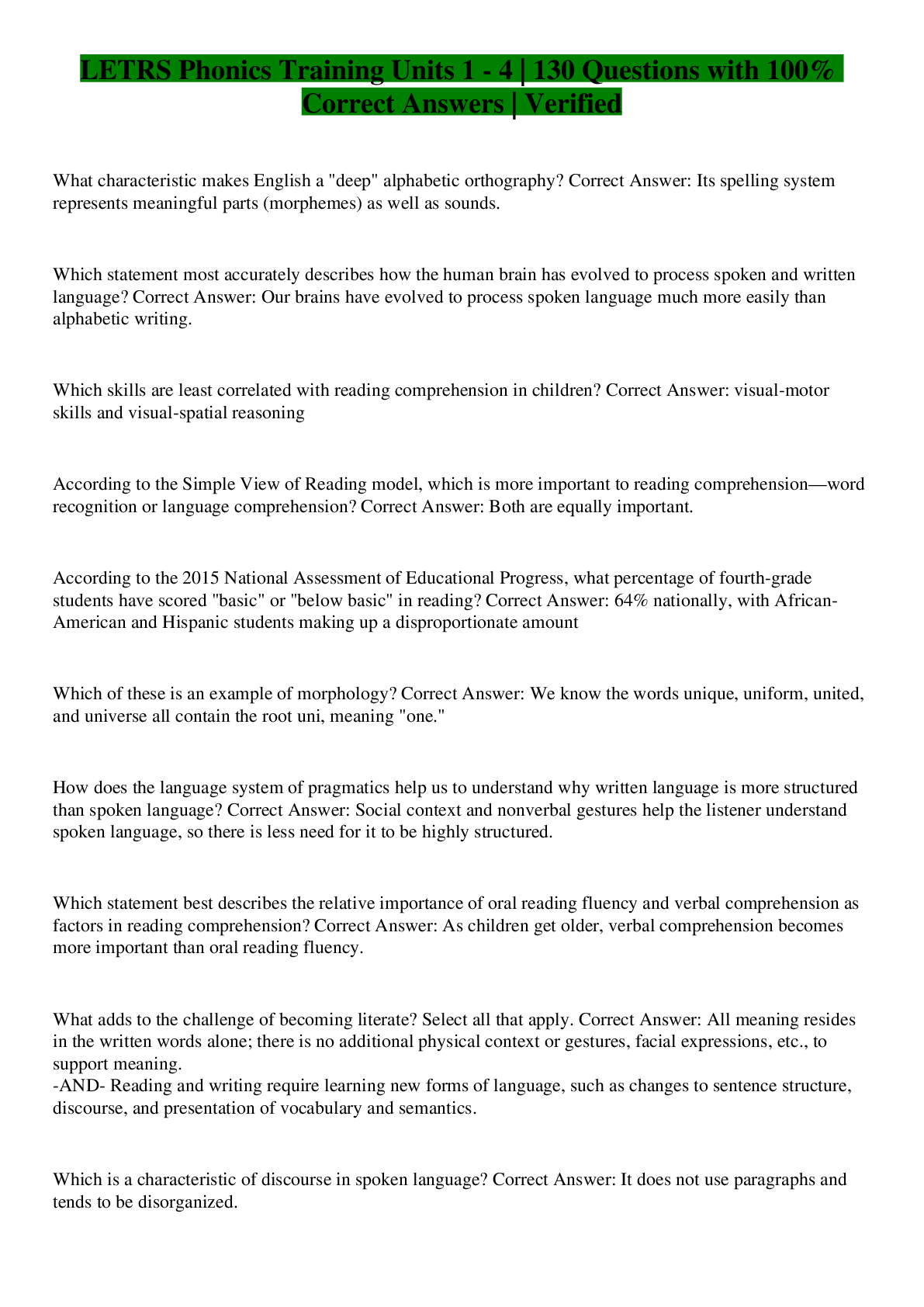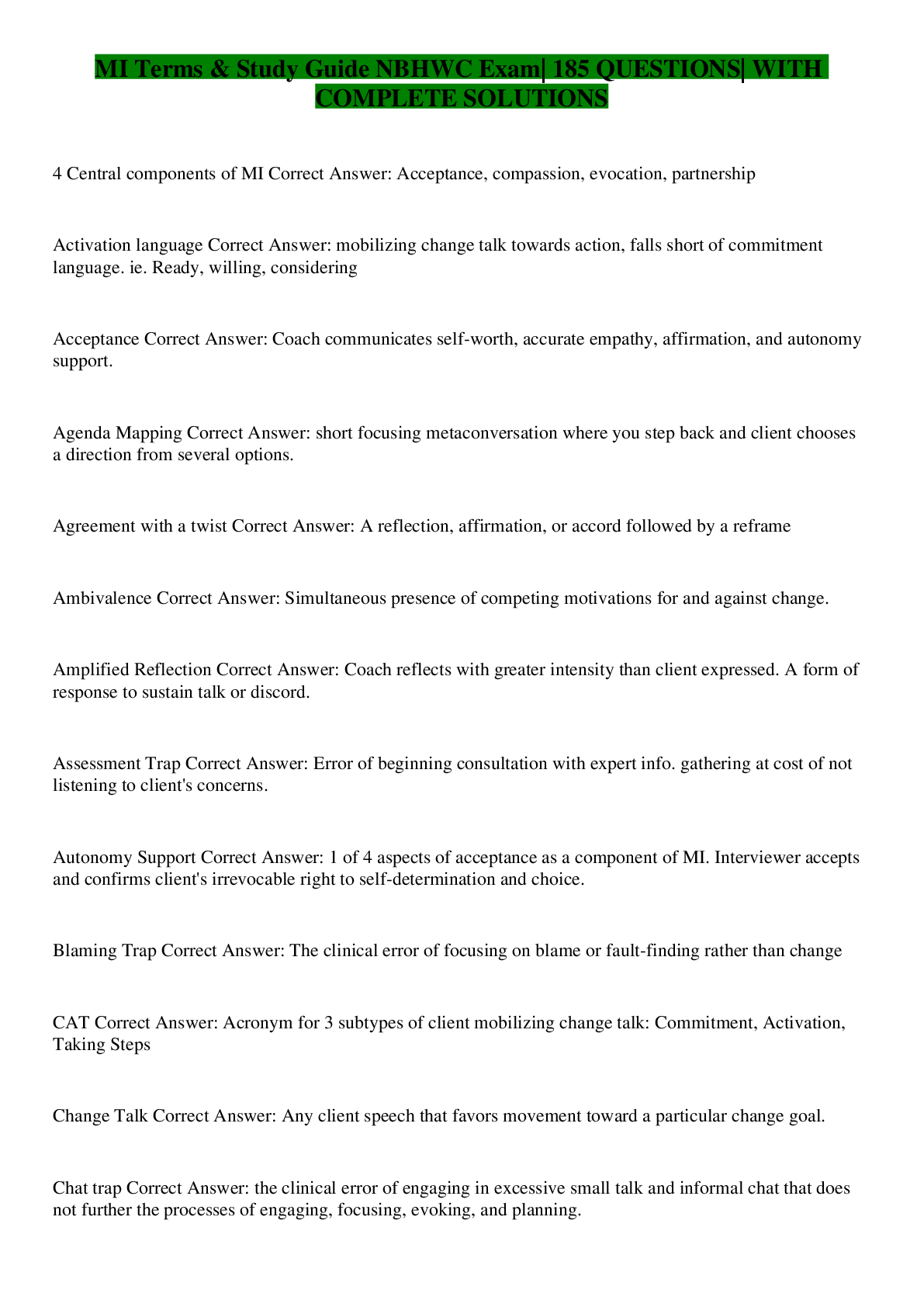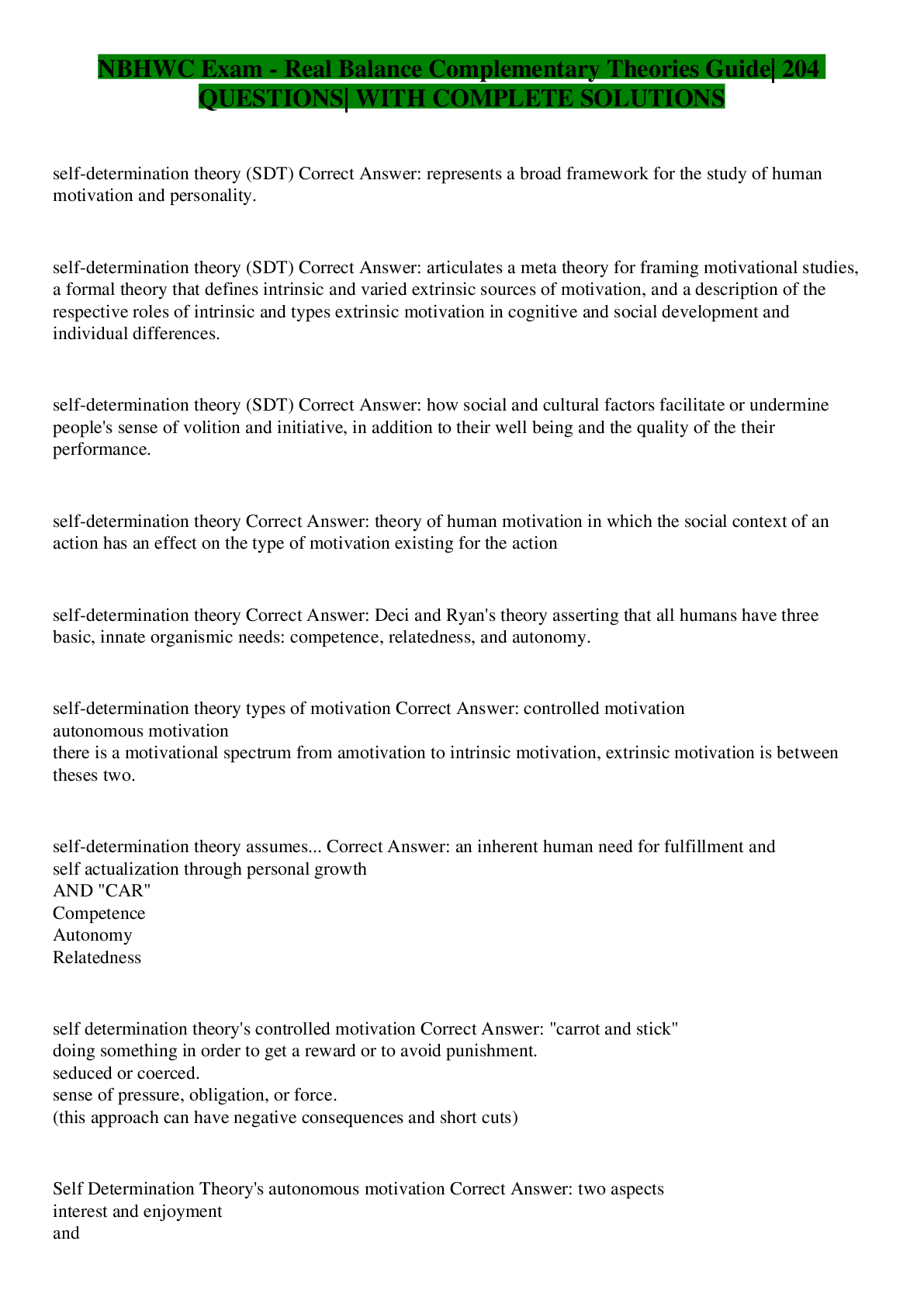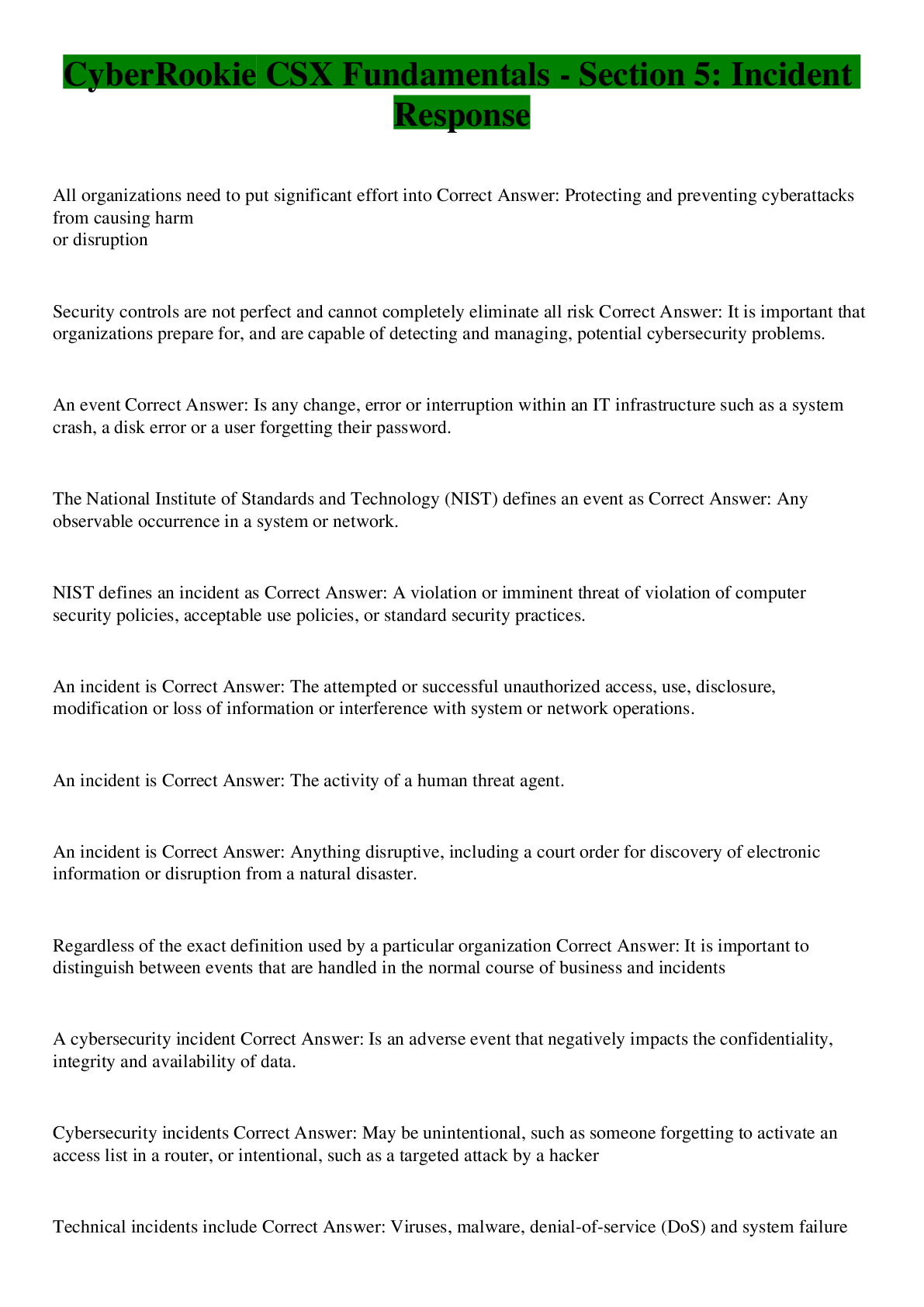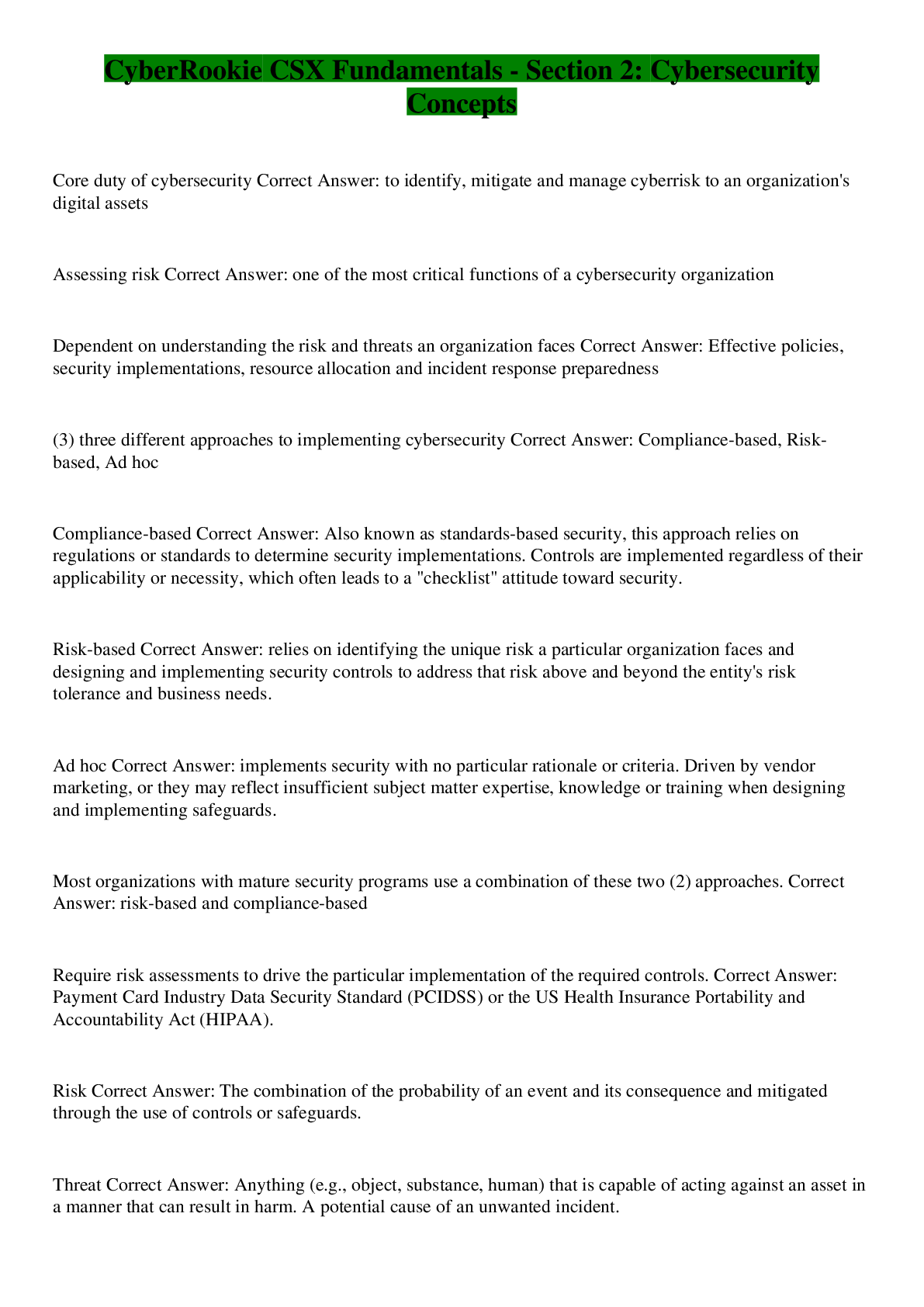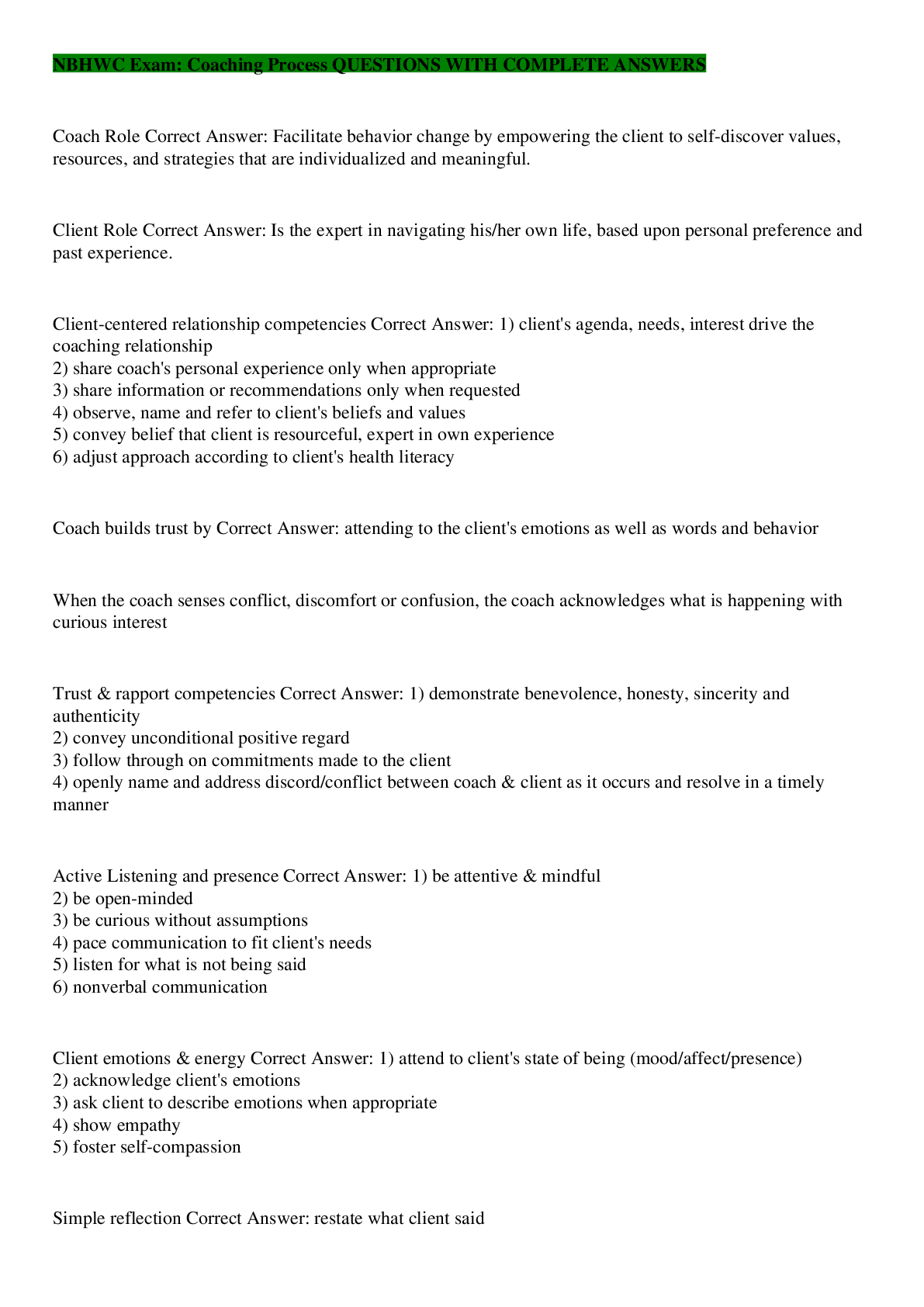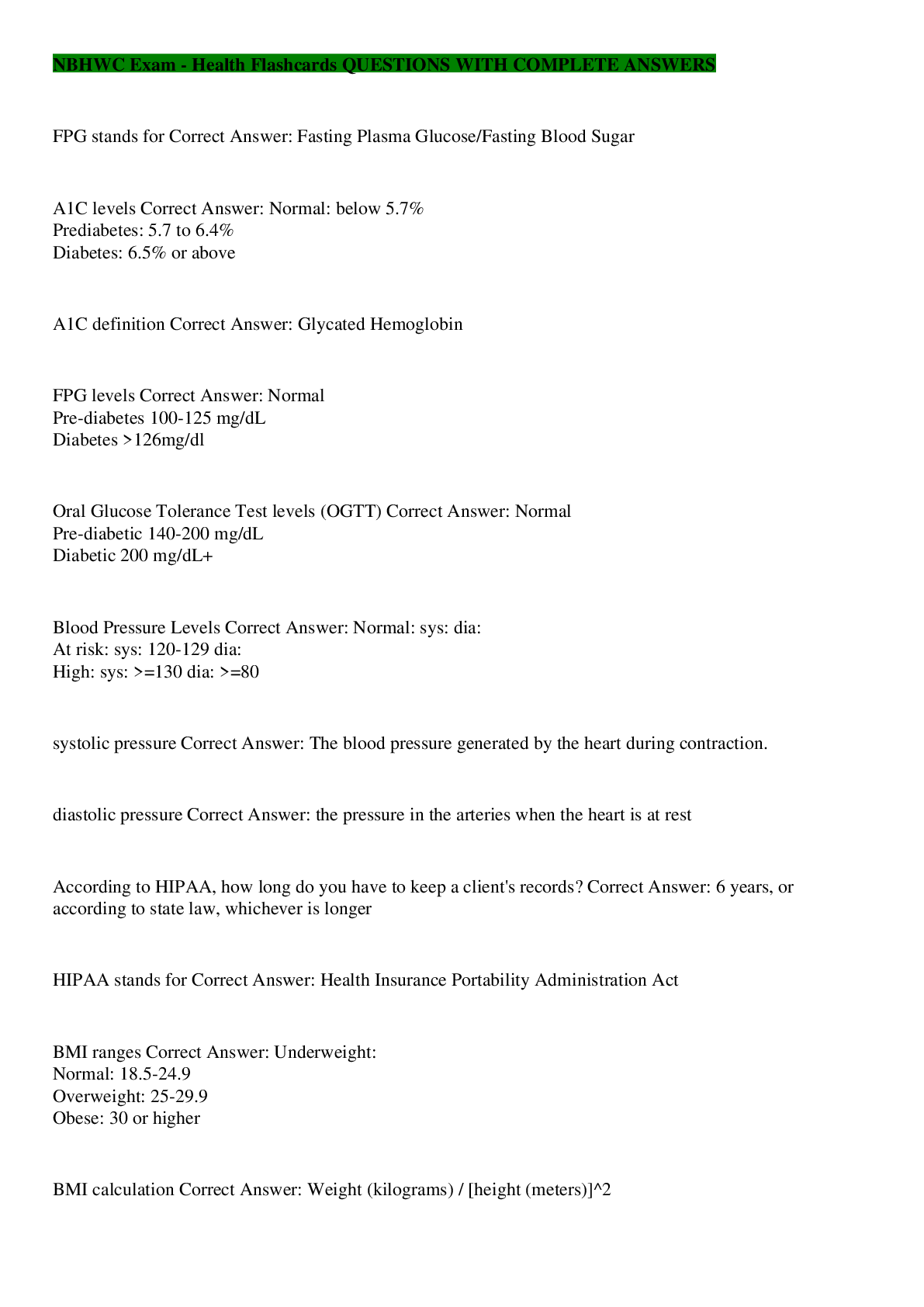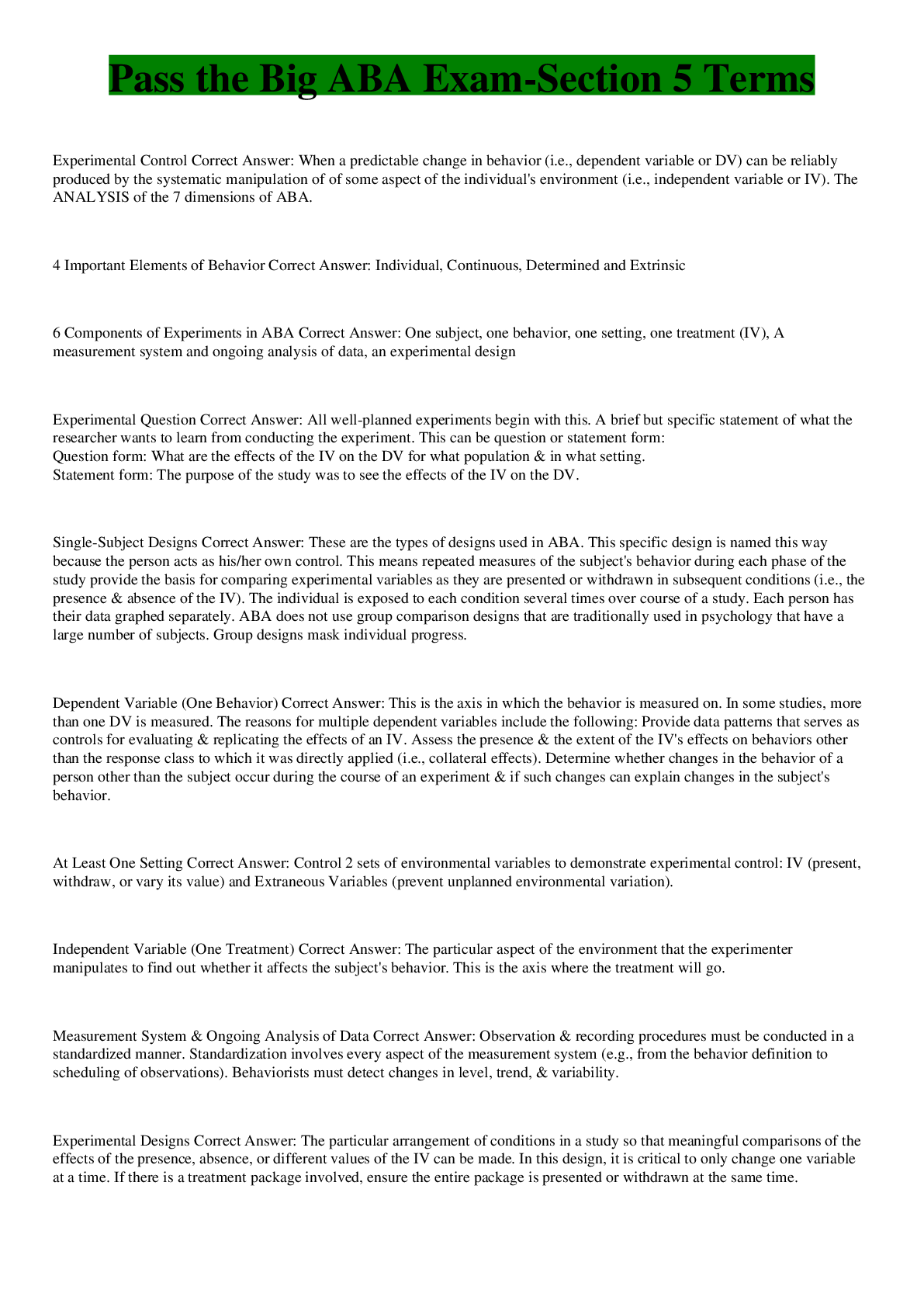Health Care > EXAM > Pass the Big ABA Exam-Section 8 Terms (All)
Pass the Big ABA Exam-Section 8 Terms
Document Content and Description Below
Pass the Big ABA Exam-Section 8 Terms 2 Methods of Conducting a Task Analysis Assessment ans: Single Opportunity & Multiple Opportunity 2 Types of Prompts ans: Response Prompts & Stimulus Prom... pts 2 Types of Shaping Methods ans: Across and Within Response Topographies 2 Ways to Remove Stimulus Prompts ans: Fading & Shaping 3 Antecedent Interventions ans: Noncontingent Reinforcement, High-Probability Request Sequence and Functional Communication Training 3 Components of Contingency Contracting ans: Behavior, Reward & Data 3 Types of Groups Contingencies ans: Interdependent, Independent & Dependent 4 Behavior Chaining Methods ans: Forward Chaining, Total-Task Chaining, Backward Chaining, and Backward Chaining with Leap Ahead 4 Behaviors that Functionally Define Imitation ans: Formal Similarity, Model, Immediacy, and Controlled Relation. 4 Ways to Remove Response Prompts ans: Most-to-least Prompting, Least-to-Most Prompting, Graduated Guidance, and Delayed Prompting 5 ABA Instructional/Educational Methodologies ans: Discrete Trial Teaching, Incidental Teaching, Direct Instruction, Precision Teaching & Personalized System of Instruction 5 Steps of Imitation Training ans: 1.) Assess & teach any prerequisite skills for imitation training. 2.) Select models for training. 3.) Pretest 4.) Sequence models for training. 5.) Implement imitation training 6 Types of Differential Reinforcement ans: DRH, DRI, DRL, DRO, DRA & DRD Antecedent Control ans: The antecedent is dependent on the consequences of behavior for developing evocative & abative effects. Stimulus Control (Sds)=Contingency Dependent. Changes in response can be achieved by using within or extra stimulus prompts. Example: In the presence of 2+2=?, but because of past reinforcement history of saying 4. Antecedent Intervention ans: The antecedent is NOT dependent on the consequences of behavior for developing evocative & abative effects. The antecedent itself affects behavior-consequence relations. MOs=Contingency Independent. Strategies that alter the MOs by influencing which classes of consequences function effectively as reinforcers. This creates an AOs because they decrease the effectiveness of reinforcers that maintain challenging behavior. Example: Sleep deprivation can influence the occurrences of problem behavior in the absence of a history of pairing sleep deprivation with reinforcement or punishment of those behaviors. Antecedent-Based Self-Management Tactics ans: Primary feature is the manipulation of events of stimuli antecedent to the target (i.e., controlled) behavior. Ways to do this include: Manipulating MOs, Providing Response Prompts, Performing Initial Steps of a Behavior Chain, Removing materials required for an undesired behavior, Limiting Undesired Behavior to Restricted Stimulus Conditions, and Dedicating a Specific Environment for a Behavior Augmentative Communication Systems ans: This is for individuals who cannot communicate using vocal speech, so therefore we should utilize a communication method. We must assess the individual's current repertoire of verbal skills, along with those of his/her audience. Example: Signing, touching, or exchanging a picture. Backward Chaining ans: A procedure in which the trainer completes all the initial steps except for the last step, at which point the individual is taught to complete the last step & once the individual has mastered the last step, then he/she is required to complete the last 2 steps in order to receive reinforcement. This continues until the learner is able to complete all the steps of the task analysis. The first behavior the individual performs independently produces the terminal reinforcement (e.g., the shoe is tied) Backward Chaining with Leap Aheads ans: This is the almost the same as backward chaining, but not every step in the task analysis is trained. Some steps are simply probed. If the step is already in the individual's behavioral repertoire, it does not need to be trained & one can be skipped over that step. The purpose of this is to decrease total training time needed to learn the chain. Behavior Chain ans: A specific sequence of discrete responses, each associated with a particular stimulus condition,where each response & the associated stimulus condition serve as an individual component of the chain. When the components of the are linked together, they produce a terminal outcome. Each response in a this produces a stimulus change that simultaneously serves 2 functions: (a) A conditioned reinforcer for the response that produced it & (b) an Sd for the next response in the chain. An exception to this procedure is about the dual function and that is the first & last response serve as either an Sd or an conditioned reinforcer. Example: Dialing a phone number Behavior Chain with Limited Hold ans: The chain must be performed correctly & within a certain time. Accuracy & rate are essential dimensions to this hold. Example: In a phone number, each digit must be dialed within a certain amount of time after the previous digit. If too much time elapses in between the dialing of the digits, then the phone number will be dialed incorrectly or may not be dialed at all. Benefits of Chaining ans: Increases independent living skills so that individuals can function more independently in society. Elaborates an individual's current behavioral repertoire. Example: Teaching a person with intellectual disabilities the steps of working in an assembly line for employment. Block Trial ans: Giving a 'block' of one Sd followed by a block of another Sd. The target changes one time during the series of trials (i.e., the switch). Breaking Behavior Chains ans: Rules for undoing this is: 1.) Reexamine the Sd & the response 2.) Determine whether similar Sds cue different responses. 3.) Analyze the natural setting to identify relevant & irrelevant Sds. 4.) Determine whether Sds in the natural setting from training Sds. 5.) Identify the presence of novel stimuli Chaining Steps ans: The steps to this procedure includes: 1.) Create & confirm the task analysis 2.) Assess Baseline Level of Mastered Steps 3.) Decide on the behavioral procedures of this to implement. Choral Responding ans: Teachers give the students a signal, which tells them when to participate during a lesson. The topography of the signal can be different (e.g., snapping of fingers, turning off light, etc.). After the signal, students are to vocally respond in unison, like a chorus. Contingency Contract ans: A procedure in which contract is developed collaboratively that stipulates a certain contingency for an individual between a behavior & a reinforcer. The contract itself is a permanent product, as it is a document that can be written or consist of visual stimuli for individuals who cannot read well. These are used in treatment packages. Controlled Relation ans: The model must be the controlling variable for the imitative behavior. The model must serve as the Sd for the imitative behavior. Controlling Response vs. Controlled Response ans: These two terms are almost the same except one is self-management behavior which is the process of the product. The other term is the target behavior one desires to alter; the product. Dedicating a Specific Environment for a Behavior ans: Reserve or create an environment where the person will only engage in that behavior. Example: Studying only in a certain place; or using a specific background on your laptop for work tasks & another background for personal tasks. Delayed Prompting ans: AKA: Delayed Cueing, Progressive Delay). This is a type of response prompt. Inserting time delays between the Sd & the prompt in order to systematically eliminate prompts. Upon successful initial implementation of the delayed prompting strategy, the prompt is no longer even needed for the person, as the person should be responding prior to the prompt. There are 2 forms of this type of prompts. Dependent Group Contingencies ans: The groups reinforcer is dependent on the behavior of an individual or small group of individuals. The goal is to make a hero out the person(s) by ensuring he/she will meet criterion for reinforcement for the entire gr [Show More]
Last updated: 1 year ago
Preview 1 out of 11 pages

Buy this document to get the full access instantly
Instant Download Access after purchase
Add to cartInstant download
We Accept:

Reviews( 0 )
$8.00
Document information
Connected school, study & course
About the document
Uploaded On
Sep 16, 2022
Number of pages
11
Written in
Additional information
This document has been written for:
Uploaded
Sep 16, 2022
Downloads
0
Views
30


